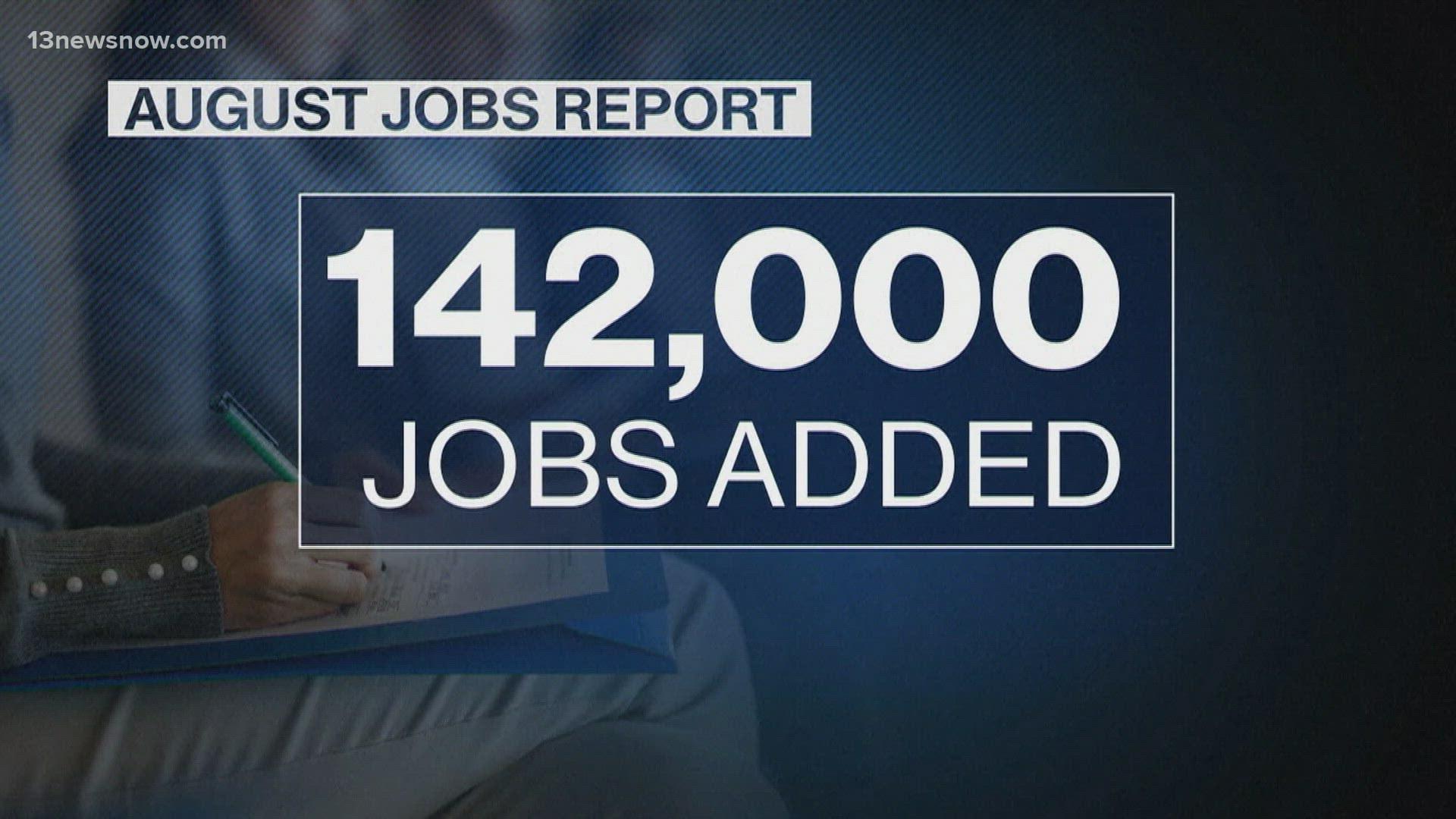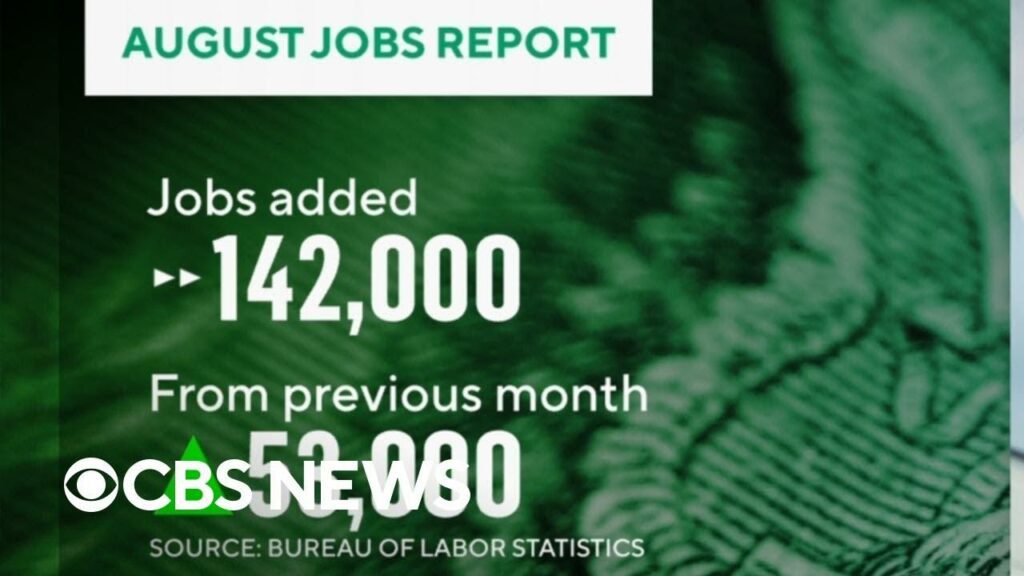In the most recent August jobs report released by the Labor Department, the American economy added a rather disappointing 142,000 jobs. Despite this lackluster performance, the unemployment rate did manage to fall to 4.2%. Let’s delve into the specifics of this latest data and what it means for the state of the nation’s workforce.
Table of Contents
- Overview of August Jobs Report
- Analysis of Disappointing Job Growth
- Implications of Falling Unemployment Rate
- Recommendations for Boosting Job Creation
- Q&A
- Insights and Conclusions

Overview of August Jobs Report
The August jobs report released today painted a mixed picture of the US economy, with the addition of a disappointing 142,000 jobs. While this falls short of the expected 250,000 new jobs, the unemployment rate still managed to decrease slightly to 4.2%. This unexpected drop comes as a surprise to many analysts who had predicted a steady rate of 4.3%.
Despite the lackluster job growth, certain sectors showed promising signs of recovery. The hospitality industry saw a significant increase in hiring, with restaurants and hotels adding over 30,000 new jobs. In contrast, the manufacturing sector experienced a slight decline in employment. the August jobs report highlights the ongoing challenges facing the US economy as it continues to navigate the impact of the ongoing pandemic.

Analysis of Disappointing Job Growth
According to the latest jobs report, the US economy added only 142,000 jobs in August, falling well below economists’ expectations. This disappointing job growth comes as a surprise to many who were hopeful for a stronger labor market recovery. Despite the lackluster numbers, the unemployment rate dropped to 4.2%, indicating that more people are exiting the labor force rather than finding new job opportunities.
The sectors that saw the most significant job gains in August were professional and business services, transportation and warehousing, and manufacturing. However, the leisure and hospitality industry continued to struggle, showing little to no improvement in job creation. With the ongoing challenges of the COVID-19 pandemic, experts are concerned that the sluggish job growth could further delay a full economic recovery.

Implications of Falling Unemployment Rate
While the unemployment rate in the United States dropped to 4.2%, signaling a robust labor market, the August jobs report revealed a disappointing addition of only 142,000 jobs. This unexpected shortfall in job growth has raised concerns about the overall strength of the economy and its ability to sustain a steady recovery.
The falling unemployment rate may have positive implications such as increased consumer confidence, higher disposable income, and potential wage growth. On the other hand, the slower job creation could lead to challenges in meeting the demands of a growing workforce and addressing income inequality. It is crucial for policymakers and business leaders to closely monitor these developments and take proactive measures to ensure long-term economic stability.

Recommendations for Boosting Job Creation
In light of the recent August jobs report, it is evident that there is a need for recommendations to boost job creation in the United States. With only 142,000 jobs added and the unemployment rate falling to 4.2%, there are steps that can be taken to help stimulate job growth and improve the economy. Here are some key recommendations to consider:
- Invest in Infrastructure: By investing in infrastructure projects such as repairing roads, bridges, and airports, it can create jobs in the construction industry and stimulate economic growth.
- Support Small Businesses: Small businesses are the backbone of the economy and by providing tax incentives and access to capital, it can help create more job opportunities.
- Improve Workforce Training: Enhancing workforce training programs to match the skills needed by employers can help individuals secure employment in high-demand fields.
| Recommendation | Impact |
|---|---|
| Invest in Infrastructure | Creates jobs in the construction industry |
| Support Small Businesses | Promotes economic growth and job creation |
| Improve Workforce Training | Helps individuals secure employment in high-demand fields |
Q&A
Q: What does the August jobs report reveal about the state of the economy?
A: The August jobs report shows that the economy added a disappointing 142,000 jobs, falling short of expectations.
Q: Despite the lower job numbers, what positive development was noted in the report?
A: The unemployment rate fell to 4.2%, which is a positive sign for the labor market.
Q: What factors contributed to the lower than expected job growth?
A: A variety of factors could have contributed to the lower job growth, including the ongoing impact of the COVID-19 pandemic, labor shortages, and other economic uncertainties.
Q: How do economists interpret the August jobs report?
A: Economists are likely to view the August jobs report as a mixed bag, with some positives in the form of a lower unemployment rate, but concerns about the overall job growth numbers.
Q: What implications does the August jobs report have for the future of the economy?
A: The August jobs report suggests that the recovery of the economy may be slower than expected, and policymakers may need to take action to support job growth in the coming months.
Insights and Conclusions
the August jobs report reveals a mixed bag for the U.S. economy. While the unemployment rate has fallen to 4.2%, indicating a tightening labor market, the addition of only 142,000 jobs falls below expectations. As we move forward, it will be crucial to closely monitor economic indicators and policy decisions to gauge the health of the labor market. Stay tuned for further updates and analysis on the state of the U.S. economy. Thank you for reading USA TODAY.
